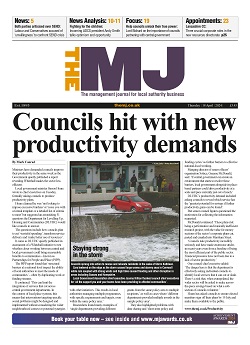The new inspection regime for assessing the performance of health and care services is a ‘significant improvement’ on the system it replaced, but there is room for improvement, a landmark report has concluded.
In 2013 the Care Quality Commission (CQC) adopted an ‘Ofsted-style’ inspection and rating regime for evaluating hospitals, care services, general practices and other organisations operating in the health and care sector.
The new regime was part of the Government’s response to the Francis report into the failures of care at Mid Staffordshire NHS Foundation Trust that contributed to the deaths of between 400 and 1,200 patients between January 2005 and March 2009 at Stafford hospital.
Today’s report, published by The King’s Fund and Alliance Manchester Business School, is the first major evaluation of the new inspection regime since it was introduced.
Funded by the National Institute for Health Research, the report examined how the regime was working in four sectors — acute hospitals, mental health, general practice and social care – in six areas of England between 2015 and 2018.
The new approach, it concluded, was a ‘significant improvement’ on the system it replaced.
It found that the impact of the inspection regime came about through the interactions between providers, CQC and other stakeholders — not just from an individual inspection visit and report.
These relationships are ‘critical’, it suggested, with mutual credibility, respect and trust being ‘very important’.
The report argued that CQC should invest more in the recruitment and training of its workforce and it called on providers to encourage and support their staff to engage openly with inspection teams.
Despite the improvements, however, the report warned the focus on inspection and rating may have crowded out other activity which might have more impact.
It recommended that CQC focus less on large, intensive but infrequent inspections and more on regular, less formal contact with providers, helping to drive improvement before, during and after inspections.
The evaluation also uncovered significant differences in how CQC’s inspection and ratings work across the four sectors it regulates.
Acute and mental health providers were more likely to have the capacity to improve and had better access to external improvement support than general practice and social care providers.
The report recommended that CQC develop the inspection model in different ways for different sectors, taking into account these differences in capability and support.
The researchers also analysed data on A&E, maternity and GP services to see if CQC inspection and rating had an impact on key performance indicators but found only small effects.
The ‘risk-based’ system using routine performance data which CQC used to target inspections was found to have little connection to subsequent ratings. The report suggested the CQC use a wider range of up-to-date data to develop a more insightful way of prioritising inspections.
‘Over the past few years, the CQC has completed a herculean task by inspecting and rating every hospital, general practice and adult social care provider in England,’ said Ruth Robertson, report author and senior fellow at The King’s Fund.
‘Although we heard general support for their new approach, we also uncovered frustrations with the process, some unintended consequences and clear room for improvement.
‘We found that CQC’s approach works in different ways in different parts of the health and care system. When CQC identifies a problem in a large hospital there is a team of people who can help the organisation respond, but for a small GP surgery or care home the situation is very different.
‘We recommend that CQC develops its approach in different ways in different parts of the health system with a focus on how it can have the biggest impact on quality.’
Kieran Walshe, report author and professor of health policy and management at Alliance Manchester Business School, the University of Manchester, welcomed the fact that CQC had already taken some of the report’s findings into account.
‘Fundamentally, the purpose of regulation is to drive improvement – not just in poorly performing providers but across the board,’ Professor Walshe continued.
‘CQC can now build on its experience and database from the first full cycle of inspection and rating, to create a more targeted and responsive regulatory model’
'But CQC cannot do this alone. It is just as much up to health and social care providers, and other stakeholders like NHS England and NHS Improvement, to make regulation work in improving services for patients.’

